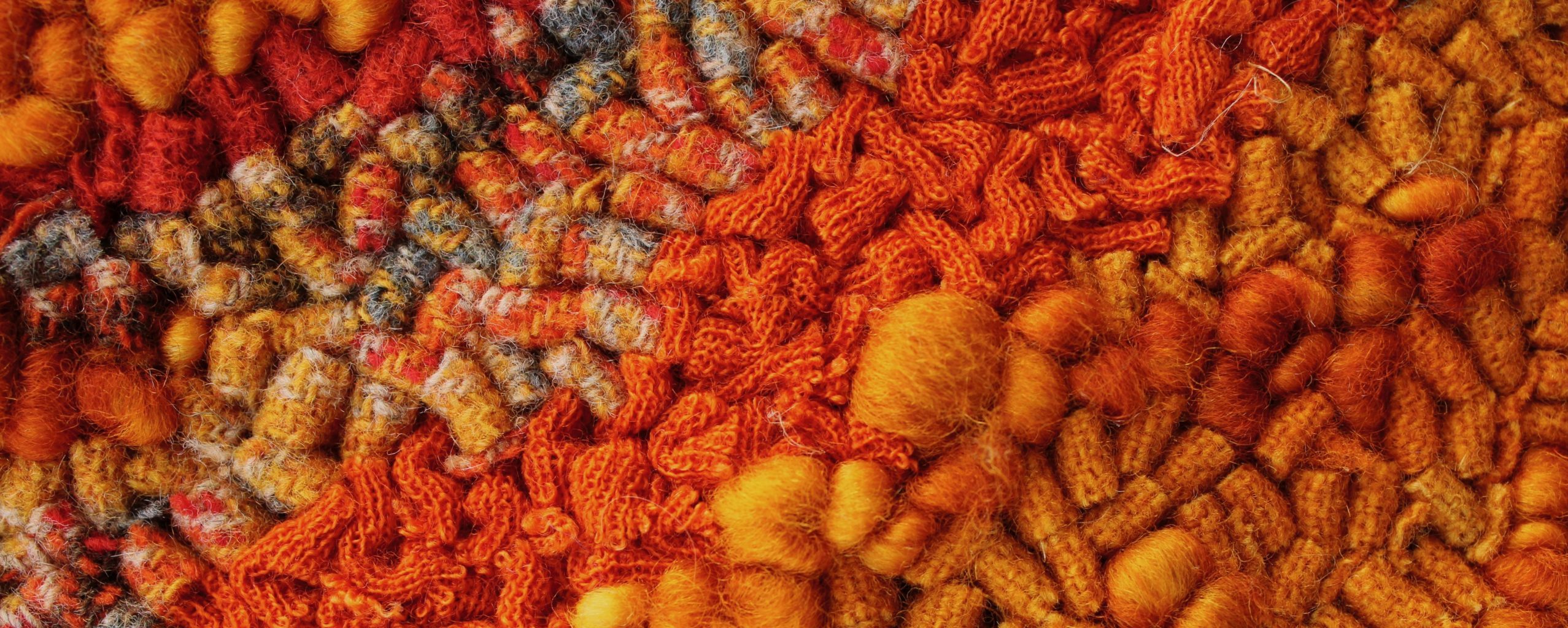fiber art
-
Walk through exhibit with me at Virginia Quilt Museum
A video walk through of the fiber exhibit Stories are Made Loop by Loop at the Virginia Quilt Museum curated by Susan Feller.
-
Stories are Made Loop by Loop Installed
Contemporary fiber artists using rug hooking techniques exhibit opens at Virginia Quilt Museum, Harrisonburg, VA until October 7, 2023. With digital catalog
-
Themes explored with fiber in exhibit
In the lead-up to opening of ‘Stories are Made Loop by Loop’ at the Virginia Quilt Museum on July 12 this post highlights themes explored by the makers. The artists chose to spend hours alone with fiber, color, shapes and simple tools developing work that visualized a personal experience or important issue. They used the rhythmic slow process of pulling loops to meditate and heal, advocate, resolve personal problems. When you visit the exhibit or read the digital catalog, available in mid July, we invite the viewer to LOOK at the work before reading the stories. THINK how you react to the design. Is there a story in your life…
-
Months in the planning
This project lives up to my chosen word for 2023 – PROMOTE. I am officially announcing the exhibit ‘Stories are Made Loop by Loop’ opening July 12 at Virginia Quilt Museum, 301 S Main, Harrisonburg, VA extending through October 7. I have curated hooked work by seven international artists. Meet the makers this month. In the June 20th post I will provide details from their stories . Plans for July’s post include a link to a virtual catalog for our global network and on-site photos. Colour, texture, joy and self-compassion define Meryl Cook’s work as a fibre artist and writer in Nova Scotia, Canada. She is the author of two…
-
Caring for Nature
Looking back over my work I realize growth, geology and sounds of nature have inspired and influenced it. To study life outside of our dwellings brings an awareness of delicacy and interdependency. It seems my media of choice; fiber/textiles and non-mechanical tools (a hook and needle); honors the experiences my senses absorb. I participated as a Girl Scout in the very first Earth Day celebrations. In 2020 I honored the 50th anniversary quietly while hooking alone in my studio on 2020 Journal (detail is above). See ‘Trees are My Muse on my YouTube channel where I explore the subject as design element. There are several organizations which I follow and…
-
Learn by Questioning
There are many opportunities to learn. Watching a how-to video helps, but when you are able to ask questions a relationship develops. The Tamarack Foundation for the Arts offers personal networking experiences through the Creative Network. Monthly Lunch and Learn programming lead by WVCN Liaison, Angelica Armstrong, introduces successful, emerging, retailers, writers, musicians, artists in all media to the registrants. After a conversation exploring the speaker’s journey, the audience raises questions and tags “golden nuggets” (wise tips) shared. Executive Director for Beckley Art Center, Robby Moore experiences as an artist, curator, theatre professional, community advocate provided steps how to prepare for and approach a gallery with your work.Tips from his…
-
Textile Arts in Appalachia
Choosing a word to describe the year ahead has become my routine. PROMOTE is 2023’s. Monthly, on the 20th, a blog post will be released introducing people, places and or events I have researched. Focusing on contemporary textile arts, today’s makers of Appalachian traditions or the stories behind objects, the posts will aim to promote culture in the 21st C. The Dairy Barn Art Center in Athens, OH offers exhibitions, events and educational programs providing access to fine arts and crafts from outside the region to community of all ages. In its 14th year Women of Appalachia fine art exhibit is featured in the main gallery January 13 – March…







